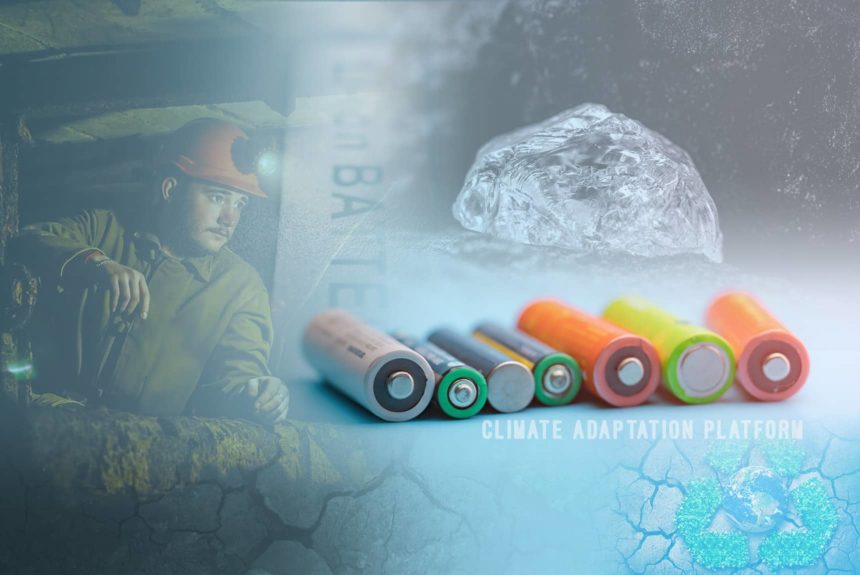Transitioning to electric cars is one of the solutions to fight climate change. But the mining of lithium for its batteries is often criticised, especially in the South American salt deserts or ‘salars’ due to its environmental and societal impacts.
The total global reserve of lithium is estimated at 14 million tons. Chile has the world’s largest known lithium reserves at 8 million tons, Australia at 2.7 million tons, Argentina at 2 million tons, and China at 1 million tons. Portugal also has smaller quantities of this raw material.
When it comes to production, Australia heads the pack supplying 51,000 tons in 2018, surpassing Chile’s 16,000 tons just recently China at 8,000 tons, and Argentina at 6,200 tons.
In 2013 Bolivia also opened a pilot plant for lithium carbonate. Bolivia’s new ‘salars’ and production capacity is small compared to its neighbour’s Chile and Argentina, which began extracting lithium some 40 decades earlier.
Bolivia’s plant will produce only 600 tonnes of lithium carbonate in 2021, priced at $5 million, and by contrast, Chile and Argentina are expected to produce 134,000 and 36,000 tonnes in the same year.
Recently, an excellent lithium deposit contained in 11 million tons of ore valued today at US$1.5 billion was discovered just north of Plumbago Mountain in Newry, Maine.
However, landowners Gary and Mary Freeman are unsure whether the lithium will ever be extracted from their land due to its stringent mining laws because Maine had a terrible mining history.
In the ’60s, the mining of copper and zinc spread toxins in nearby sediment, water and fish and caused taxpayers up to $45 million in clean up (Cough, 2021).
Demands for lithium globally
Lithium demand doubled between 2015 and 2020 to around 360,000 tonnes per year. It will soon overtake supply by some 240,000 tonnes per year. The slow consumer uptake of electric cars makes the demands for lithium speculative. However, the projections that more people will soon transition to plug-in wheels have renewed interest in the mining and production of lithium (How Bolivian lithium, 2021).
Environmental impacts of lithium extraction and mining.
In Chile and Argentina, where massive lithium deposits are stored, and more recently, Bolivia, extracting lithium involves digging a series of huge pools. The largest reached 30 hectares of surface area to get to the lithium-rich brine.
These brines are transferred from one pool to another, as evaporation helps isolate different salts. The lithium concentration in brine varies in these countries, Bolivia having the trickiest brine at 17 parts of magnesium to one part of lithium and Chile having a purer brine 4:1 ratio.
In some areas where lithium is extracted via salars, locals complain that this method has increased droughts and has threatened livestock farming and dried out vegetation in the area.
However, experts are still trying to link the relationship of lithium mining to droughts. But what is disputed is the extent to which saltwater extraction leads to an influx of freshwater which affects the groundwater at the edges of the salars.
An exclusive article from E&T (Heubl, 2019) presents evidence of how the activities of lithium-mining companies have a direct role in damaging the local environment in Chile’s Atacama salt flat. The mining has reduced water levels in an already dry region, adversely affecting local communities, protected lagoons, and areas of alluvial muds. These alluvial muds are the nesting ground for Andean flamingos.
When it comes to the evaporation of these ‘salars’, Cristina Dorador, a Chilean biologist who studies microbial life in the Atacama desert, says that “there is no recharge of the water in the Atacama salt flat. Much of the water evaporates in the process. This isn’t sustainable”.
Chile’s government figures show that the extraction of brines provokes hydrological imbalances. Brine output for each second is 8,842 litres, and recharge capacity is only 6,810, which is 2000 litres short.
Dorador adds that lithium mining is a paradox in Chile. “On one side, we are talking about decarbonisation, [to mitigate] climate change and biodiversity loss. On the other side, we exploit the environment for resources to power the electric mobility revolution that supports climate change.”
Chile is also looking to open more land to brine sites. According to the article, some of these areas encroach upon indigenous communities, and exploration in these sites happened without any consultation with them, which could lead to legal disputes and social protests.
Read the entire article to know more about the environmental impacts of Southern America’s salt lakes: Lithium firms depleting vital water supplies in Chile, analysis suggests.
Sources:
Lithium mining what you should know about the contentious issue. (2021). Volkswagen. Retrieved from https://www.volkswagenag.com/en/news/stories/2020/03/lithium-mining-what-you-should-know-about-the-contentious-issue.html#
Cough, K. (2021 October 24). Staggering $1.5 billion lithium deposit discovered near Newry; excavating it poses a challenge. The Maine Monitor. Retrieved from https://www.themainemonitor.org/staggering-1-5-billion-lithium-deposit-discovered-near-newry-excavating-it-poses-a-challenge/
How Bolivian lithium could help fight climate change. (2021 December 11). The Economist. Retrieved from https://www.economist.com/the-americas/how-bolivian-lithium-could-help-fight-climate-change/21806677?
Heubl, B. (2019, August 21). Lithium firms depleting vital water supplies in Chile, analysis suggests. E&T. Retrieved from https://eandt.theiet.org/content/articles/2019/08/lithium-firms-are-depleting-vital-water-supplies-in-chile-according-to-et-analysis/



Leave a Reply